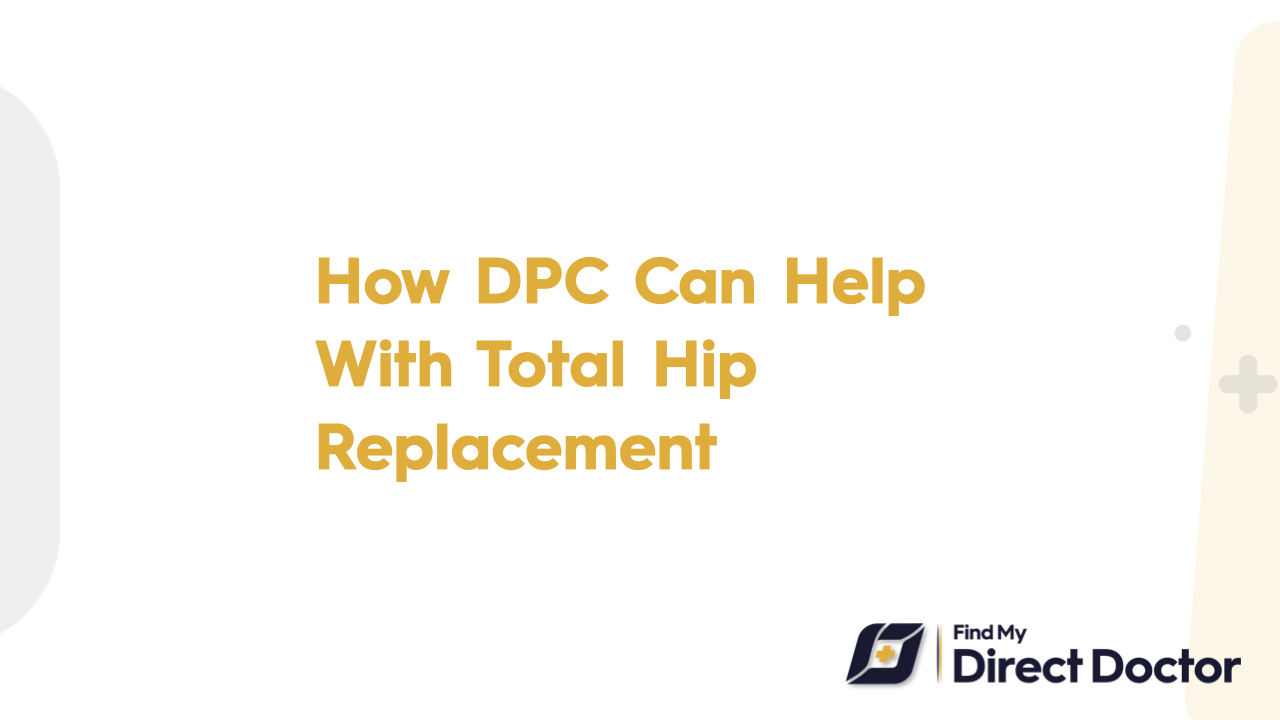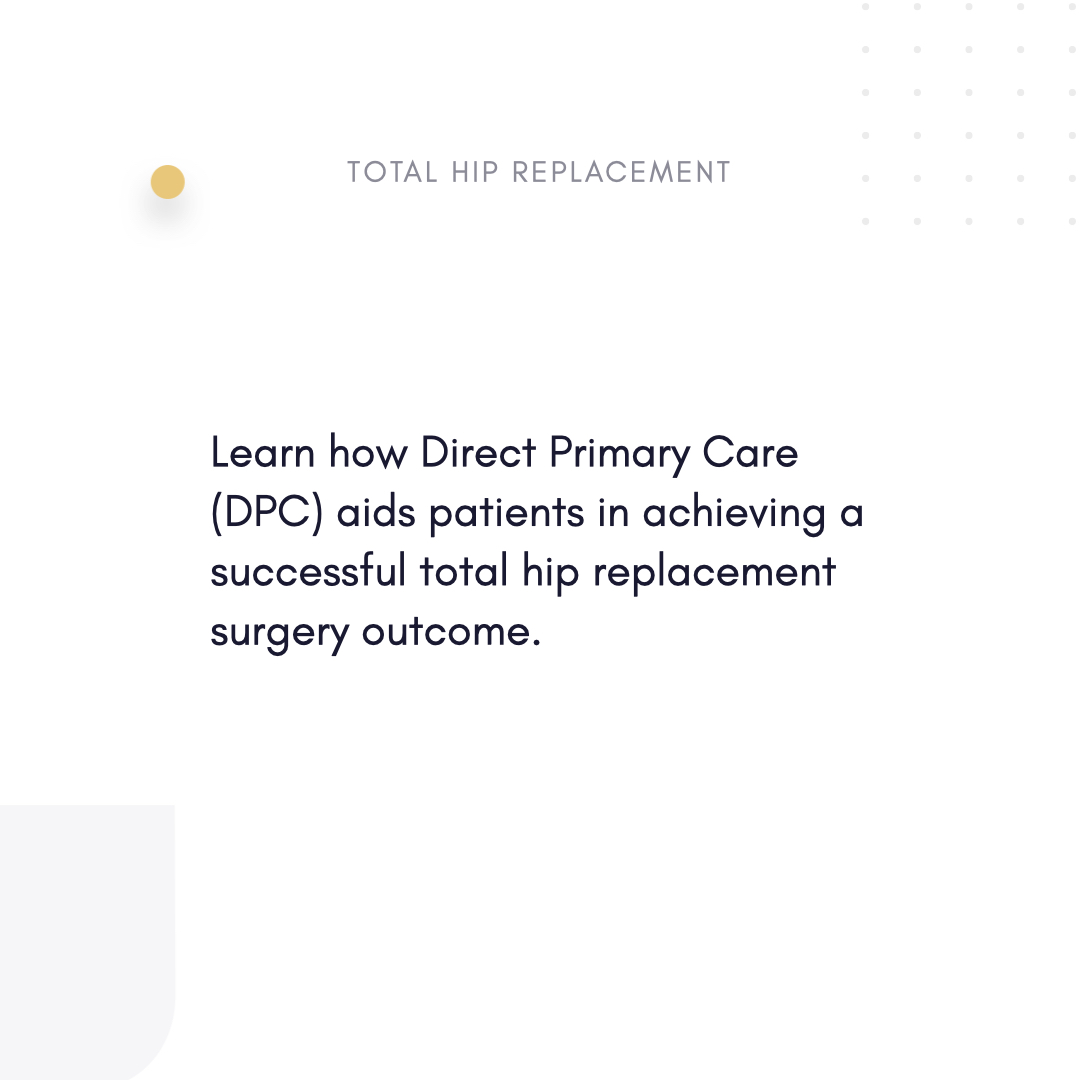Total Hip Replacement (THR) and Direct Primary Care (DPC): Mobility Restored, Personalized Care
If arthritis in your hips makes it hard for you to move, a total hip replacement can help you get back on your feet. DPC makes sure that your surgery and recovery are planned, affordable, and meet your needs.

Understanding Total Hip Replacement: Getting back to moving without pain
THR uses prosthetics to replace damaged hip joints. Important information:
- There are two ways to do it: anterior (muscle-sparing) or posterior. The success rate is 90–95%.
- Uses: It helps with osteoarthritis, avascular necrosis, and broken bones.
- Safety: Low risk of infection (<1%); discharge on the same day is possible.
Important facts:
- Costs: DPC memberships (150–400 USD/month) cover pre-op consults and follow-ups, unlike traditional fees (20,000–40,000 USD/surgery).
- Risks of delay: loss of muscle mass, long-term pain, and disability.
How DPC Improves THR Results
Direct Primary Care (DPC) changes how joints are cared for by putting the patient first and coordinating care ahead of time.
All-inclusive Before Surgery Preparation
- Quick tests: Get X-rays, MRIs, or CT scans done in less than 72 hours.
- Prehab programs: Strengthen glutes and core for faster recovery.
- Managing medications: Change blood thinners or DMARDs before surgery.
Clear prices and all-around help
- All-inclusive care: Membership includes coordinating with the surgeon, physical therapy, and medications after surgery.
- Saving money: Self-pay DPC rates can save you 25% to 50% on facility fees.
- Focus on mental health: Get counseling to help you deal with anxiety about surgery.
Personalized Recovery and Long-Term Health
- Access 24 hours a day, seven days a week: Take care of pain, swelling, or fever right away after surgery.
- Virtual PT: Use telehealth to help people do early mobility exercises.
- Care that stops problems from happening: Suggest calcium and vitamin D to keep bones healthy.
Benefits of DPC for THR Patients
- No waiting times: 90% of DPC patients have their surgery scheduled within two weeks, which is much faster than the usual six weeks.
- Continuity: One team is in charge of pain control, wound care, and following through with physical therapy.
- There are no extra fees: Prices that are clear (for example, 18,000 USD all-inclusive for the front approach).
True Stories of Success
- Case 1: Linda, 68, has very bad osteoarthritis. Linda's DPC team did an anterior THR, and she was able to walk on her own in three days.
- Case 2: Raj, 55, after avascular necrosis. Raj's DPC provider used ceramic implants to fix his golf swing in 12 weeks.
THR in DPC: Frequently Asked Questions
- Q: How long does it take to get better?
- A: 6 to 12 weeks; stay away from high-impact sports for 6 months.
- Q: Will I need a walker?
- A: Yes, for 2–4 weeks; DPC will bring it to your home.
- Q: Is it possible for the implant to come loose?
- A: <5% at 10 years; DPC checks every year with X-rays.
- Q: What if the pain doesn't go away?
- A: DPC looks into injections, revisions, or pain management.
Why DPC is the best place for joint care
The American Academy of Orthopaedic Surgeons (AAOS) stresses the importance of getting ready for surgery. DPC gets things done by:
- Lessening problems: Prehab lowers the rate of dislocations by 30%.
- Increasing adherence: 95% of DPC patients finish PT, while only 70% of people in the U.S. do.
- Members save between 8,000 USD and 20,000 USD by using bundled pricing.
Final Thoughts
THR in DPC isn't just about getting a new joint; it's also about working with a team that is committed to your active future. With DPC, you can avoid insurance delays, see the best surgeons, and get a recovery plan that works for you. Experience care that moves you forward, from getting ready for surgery to walking without pain.






